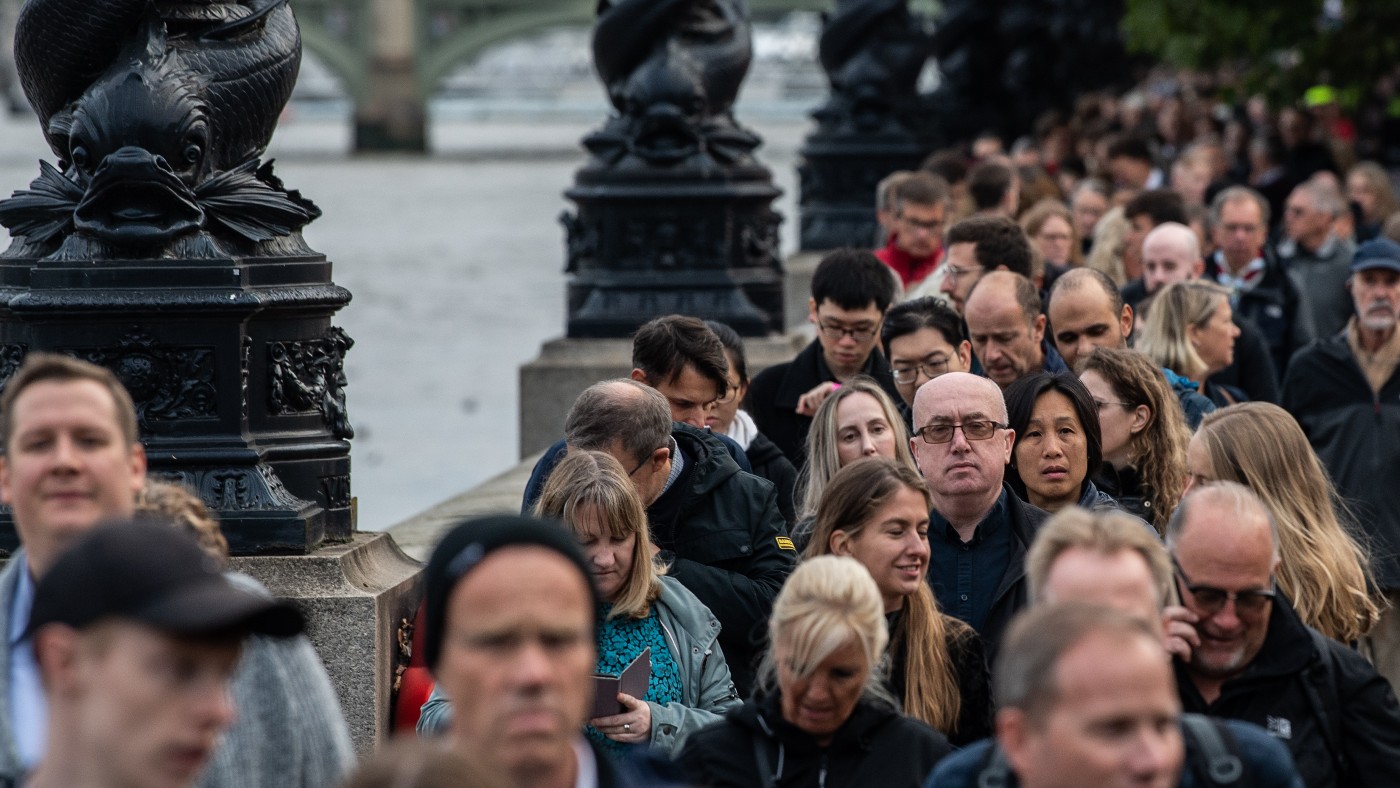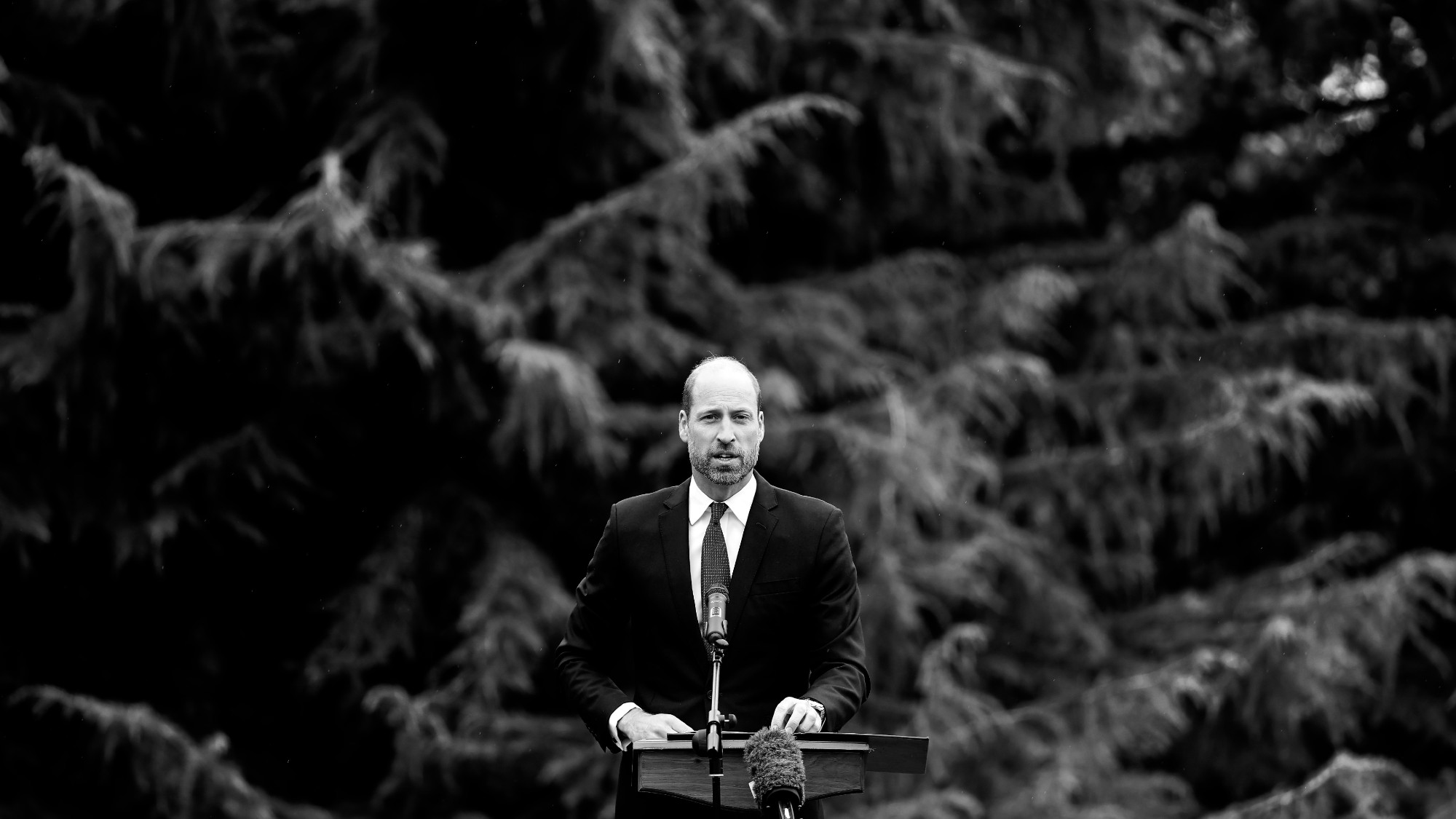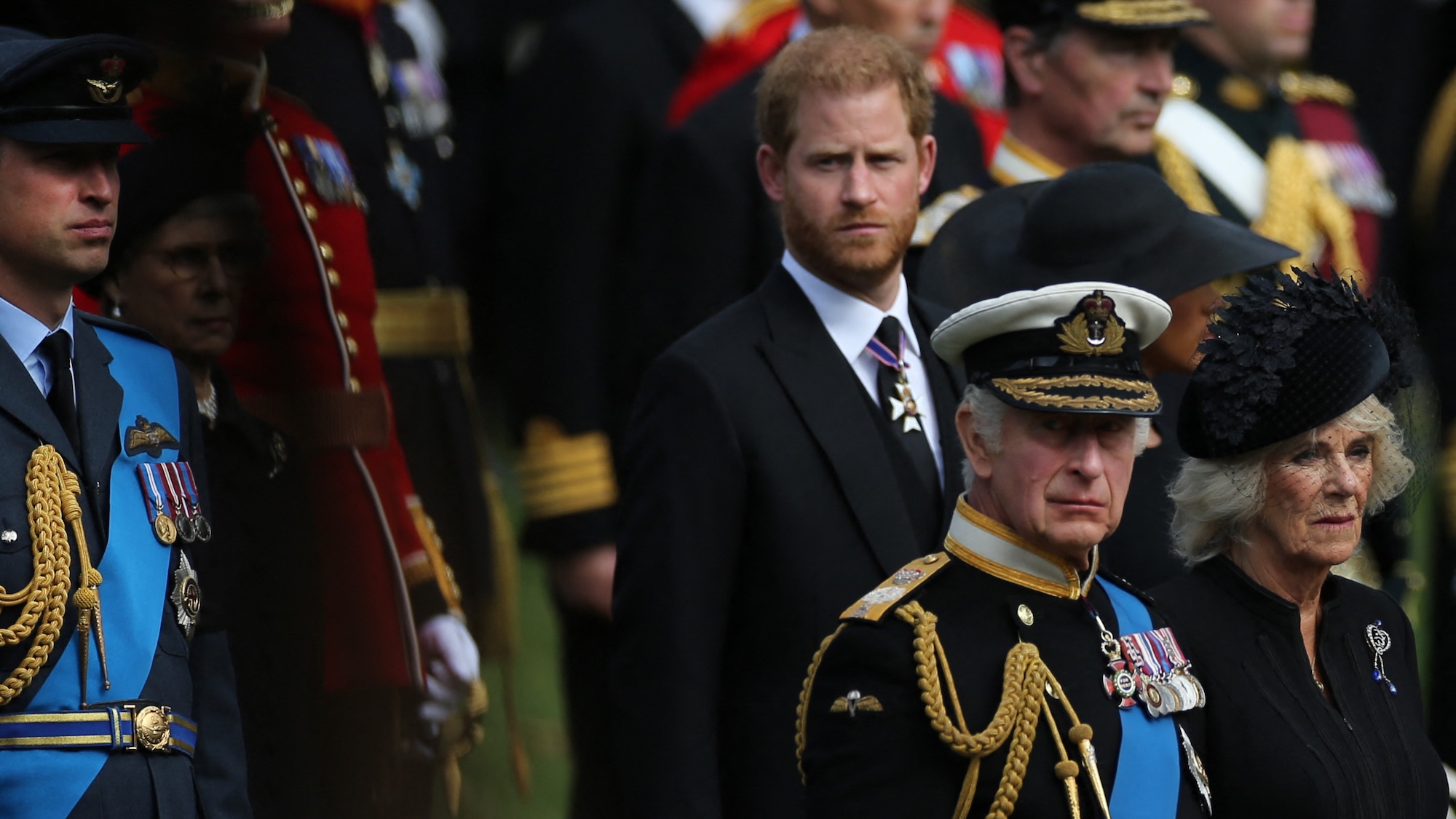Queen’s lying in state: what you need to know
Mourners may need to queue overnight in order to see the Queen’s coffin at Westminster

Mourners coming to London from across the country to pay their last respects to the Queen as she lies in state have been warned to expect overnight queues and hours-long waiting times.
As many as 750,000 mourners could turn up hoping for one of the 350,000 places to see the Queen lying in state, said Politico. Measures are in place for the queue to “extend for up to 10 miles” with as much as “30 hours” of waiting time.
The Daily Mail reported that the queue could close “as early as Saturday night” due to the expected numbers of people. Officials are likely to close it at some point over the weekend if they decide “no more people will be able to make it in time to Westminster Hall to see the Queen lying in state”.
The Week
Escape your echo chamber. Get the facts behind the news, plus analysis from multiple perspectives.

Sign up for The Week's Free Newsletters
From our morning news briefing to a weekly Good News Newsletter, get the best of The Week delivered directly to your inbox.
From our morning news briefing to a weekly Good News Newsletter, get the best of The Week delivered directly to your inbox.
Meanwhile, some senior MPs have called for the Queen’s final procession route to be extended to “take into account the huge number of people from across the UK and world who want to pay their respects” and ensure “hundreds of thousands more” mourners are able to “see the late Queen”, reported The Daily Telegraph.
What can mourners expect in the queue?
“In a country famous for perfecting the orderly queue, those lining up for a few seconds alongside the Queen’s coffin proved no exception,” said The Guardian.
And outside Westminster Hall, further back in the queue, a few bursts of sunshine yesterday “gave the occasion a relaxed atmosphere”, with mourners equipped with “chairs, blankets and picnics” and some even “sipped drinks from the Red Lion pub”.
It is an event that has brought together people from all walks of life. There were “youngsters, oldies, the stiff-backed, the half-bent, a few in coat and tie but many more in casual dark garb”, said The Times’s Quentin Letts.
A free daily email with the biggest news stories of the day – and the best features from TheWeek.com
His colleague Tom Whipple joined some of the most experienced royal watchers in the queue as they camped overnight to see the Queen lying in state. “Put it this way: if I were 22nd in line to the throne, instead of 22nd in line to see the coffin of the previous resident of the throne, I’d be one of the Tindalls,” he wrote.
“At the front, numbers 1 to 4 – the queueing equivalent of the Windsors – have a gazebo, camping chairs and the air of people who have done this before (as I will find out, they have indeed). They are already a day in.”
As of this morning, the queue was almost three miles long, and is likely to get significantly longer throughout the weekend. Visitors can check where the end of the queue stands through live government updates.
The route begins at Albert Embankment by Lambeth Bridge and continues eastwards along the South Bank towards Southwark Park.
When and where will the Queen lie in state?
The Queen’s coffin will lie in state in Westminster Hall, part of the Houses of Parliament, from Wednesday until the day of her funeral, Monday 19 September.
The Queen’s lying in state will be open to the public 24 hours a day from 5pm on Wednesday until 6.30am on Monday.
What can people expect to see?
The Guardian reported that visitors can expect to see the Queen’s closed coffin, which “will be draped in a royal flag, usually a personal standard, and will rest on a raised platform called a catafalque”. Traditionally “a crown and other regalia” will be placed on top of the coffin.
It will be “flanked by a military guard around the clock”, with each corner of the platform “watched 24 hours a day by units from the Sovereign’s Bodyguard, Foot Guards or the Household Cavalry Mounted Regiment”, the paper said.
Some members of the public might even see members of the Royal Family, as the Queen’s children and grandchildren could “honour her with a vigil and join the guard over the coffin at some point”, in a tradition known as the Vigil of the Princes.
The Queen’s daughter, Anne, the Princess Royal, may also stand guard over the Queen, becoming “the first female member of the royal family to do so”, added the paper.
What guidance has been issued to those wanting to visit Westminster Hall?
The government has published extensive guidance for those wishing to view the Queen lying in state, warning that queues are expected to be “very long” and visitors “will need to stand for many hours, possibly overnight, with very little opportunity to sit down as the queue will be continuously moving”. Visitors have been asked to consider the long queues “before you decide to attend or bring children with you”.
Government guidance has said that visitors will go through airport-style security, with tight restrictions on what people can take in. People will only be permitted to take in one small bag, which must “be smaller than 40cm x 30cm x 20cm, with one simple opening or zip so you can move quickly through the security check”. There is also an extensive list of prohibited items, which can be checked on the government website.
Large bags, food and liquid of any kind (except clear water bottles), and flowers, candles or tributes of any kind will not be permitted inside the Palace of Westminster, according to official guidance, which advises that floral tributes be taken to the dedicated area in Green Park.
Visitors have been asked to “respect the dignity of this event”, and remain silent in the Palace of Westminster and in Westminster Hall.
Antisocial behaviour, including queue-jumping, excessive consumption of alcohol, or drunken behaviour, will not be tolerated and people risk being removed from the queue. The official guidance urged people to “dress appropriately for the occasion to pay your respects”, banning clothes “with political or offensive slogans”.
What will the queue route be?
Details of the route for the lying-in-state queue will be published at 10pm tomorrow, the night before the lying in state begins. Officials have said they may close early to ensure as many visitors as possible can enter before the lying-in-state period comes to an end.
Where does the tradition of lying in state originate?
Lying in state is a tradition that “stretches back to the 17th century when Stuart sovereigns lay in state for a number of days” after their death, reported ITV.
Edward VII “set the modern tradition” when he lay in state in Westminster Hall in 1910, added The Guardian. King George V also lay in state after his death in 1936, as did George VI – the Queen’s father – when he died in 1952.
-
 Prince Andrew: is the royal family doing enough?
Prince Andrew: is the royal family doing enough?Today’s Big Question King Charles faces calls for tougher action against Andrew after latest allegations about Virginia Giuffre and Jeffrey Epstein
-
 What will William be like as king?
What will William be like as king?Today's Big Question Prince of Wales said he won’t be ‘restricted’ by history when he takes the throne
-
 Prince charming: Harry’s tea with King sparks royal reconciliation rumours
Prince charming: Harry’s tea with King sparks royal reconciliation rumoursTalking Point Are the royals – and the UK public – ready to welcome the Duke of Sussex back in?
-
 King Charles and Prince Harry: peace in our time?
King Charles and Prince Harry: peace in our time?Talking Point Leaked images of a secret meeting between royal aides suggest a dialogue is beginning to open up
-
 King Charles and the Sovereign Grant: how UK taxpayers fund the monarchy
King Charles and the Sovereign Grant: how UK taxpayers fund the monarchyThe Explainer Royals received £86.3m from government last year – and they are in line for a 50% increase
-
 Is Prince Harry owed protection?
Is Prince Harry owed protection?Talking Point The Duke of Sussex claims he has been singled out for 'unjustified and inferior treatment' over decision to withdraw round-the-clock security
-
 The Sentebale row: a blow for Prince Harry
The Sentebale row: a blow for Prince HarryTalking Point Duke of Sussex made 'devastating' decision to stand down as Aids charity's patron, following 'power struggle' between its trustees and new chair
-
 The princess and the PR: Meghan Markle's image problem
The princess and the PR: Meghan Markle's image problemTalking Point A tough week for the Sussexes has seen a familiar tale of vitriol and invective thrown the way of the actor-cum-duchess


